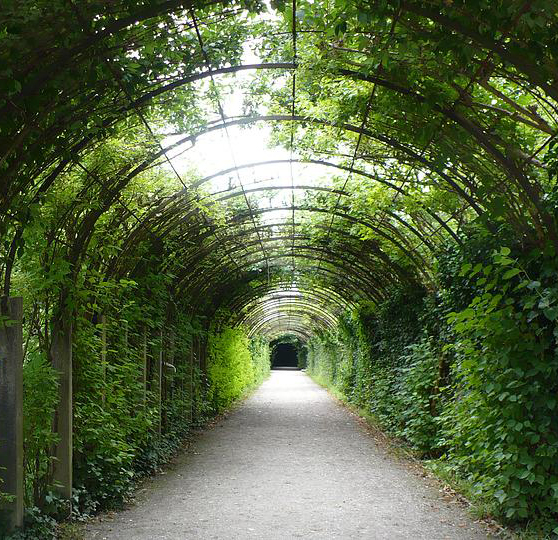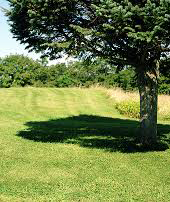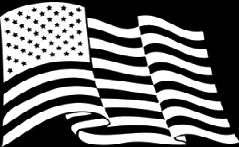blog - microclimates
Understanding and Using Microclimates
 When considering which plants are suitable to grow on your property, taking a look at the USDA cold hardiness map is a good start, but you do not have to limit your options to only those plants that fit within your cold hardiness zone. By carefully considering factors such as solar exposure, thermal mass and elevation, it’s possible to take advantage of microclimates that exist on your property in order to grow plants that would otherwise be one or two cold hardiness zones beyond your normal growing capability. Plus, cold hardiness is not the only microclimate factor to consider, since moisture needs and solar exposure can also be significantly impacted by microclimates.
When considering which plants are suitable to grow on your property, taking a look at the USDA cold hardiness map is a good start, but you do not have to limit your options to only those plants that fit within your cold hardiness zone. By carefully considering factors such as solar exposure, thermal mass and elevation, it’s possible to take advantage of microclimates that exist on your property in order to grow plants that would otherwise be one or two cold hardiness zones beyond your normal growing capability. Plus, cold hardiness is not the only microclimate factor to consider, since moisture needs and solar exposure can also be significantly impacted by microclimates.
In case you’re not familiar with the term microclimate, it’s a word used to describe a small environment that has characteristics (temperature, moisture, shade, etc.) which can be significantly different from the larger environment that surrounds it. Just think about the differences in temperature and moisture that you experience on a sunny summer day when you are standing in the blacktop parking lot, compared to taking a few steps past the curb onto the grass, or even going a few steps further to the edge of a pond. You may have moved less than ten paces, but the difference in ground temperature, air temperature and moisture are significantly different. Now add a tree that offers some shade to the scenario and you have even more differing factors in the scenario. Each one of these areas is a microclimate. Each location offers a different set of environmental conditions that you can use to your advantage.
When evaluating your property for microclimates it can be helpful to begin with an assessment of your overall climate condition by checking your location on a USDA Cold Hardiness Map (http://planthardiness.ars.usda.gov/PHZMWeb/Default.aspx). Once you’ve confirmed the zone you are in on the map, you can then adjust that information based on the characteristics of your property with regard to elevation, terrain conditions (mountaintop, shoulder slope or valley), thermal mass (large outcroppings of rock, large nearby bodies of water, etc.), and solar exposure. I’ll walk you through an example of each of these considerations. If you are located at a high elevation (such as 4,000’ or above) and the USDA Cold Hardiness Map shows the entire area (mountains and valleys) as a single cold hardiness zone, the likely reality is that your property is about a half zone colder than what the mapping shows. The valley floors usually show the more accurate cold hardiness zone for a given region. However, it should be noted that when it comes to potential frost conditions, the best location is sloping land on the shoulder of a mountain/hill, as the cold air tends to fall down the slope and settle in the valley. Now if your property has a large amount of exposed rock outcroppings or is near a large body of water (the size that shows up on a map, not your backyard pond), the density of these materials allows them to store heat energy throughout the day and release it during the colder temperatures at night. This condition can increase the cold hardiness value of your location by approximately half a zone. The final factor is probably the most obvious consideration, which is solar exposure. If your entire property is in the shadow of a mountain, it simply will not warm to the same temperature as those areas with good southern exposure, so the location will likely be about half a zone colder than the map indicates. Look at all of these factors in combination to better understand the actual cold hardiness zone of your specific property.
 Now let’s talk about the opportunities to discover and/or create microclimates on your property that will allow you to diversify the types of food producing plants you can grow. If your desire is to grow plants that require an area that is typically one or even two zones warmer than your property, look for a location that gets full southern sun exposure, especially with the lower sun angle in the winter. This area should also have some form of thermal mass, such as a masonry wall (concrete, brick, stone, etc.) where the plants can be located directly adjacent to this solid object. This will allow the sun to warm the dense material of the wall or similar object, which will reflect some of the sun’s heat back onto the plant during the day, plus radiate the heat out during the colder night hours. If this area is shielded from the winter winds, it can provide a nice pocket that is measurably warmer than the surrounding area. If the wall that the plants are adjacent to happens to be part of a heated building, that will be even better, as small amounts of heat lost from the building’s interior will also help to increase the temperature of this microclimate area. Should you wish to grow plants that require cooler temperatures during the summer growth season, select locations that have partial to full shade from large trees or structures. If only partial shade is needed, choose either the east or west side of the solar obstruction. If full shade is required, select the north side.
Now let’s talk about the opportunities to discover and/or create microclimates on your property that will allow you to diversify the types of food producing plants you can grow. If your desire is to grow plants that require an area that is typically one or even two zones warmer than your property, look for a location that gets full southern sun exposure, especially with the lower sun angle in the winter. This area should also have some form of thermal mass, such as a masonry wall (concrete, brick, stone, etc.) where the plants can be located directly adjacent to this solid object. This will allow the sun to warm the dense material of the wall or similar object, which will reflect some of the sun’s heat back onto the plant during the day, plus radiate the heat out during the colder night hours. If this area is shielded from the winter winds, it can provide a nice pocket that is measurably warmer than the surrounding area. If the wall that the plants are adjacent to happens to be part of a heated building, that will be even better, as small amounts of heat lost from the building’s interior will also help to increase the temperature of this microclimate area. Should you wish to grow plants that require cooler temperatures during the summer growth season, select locations that have partial to full shade from large trees or structures. If only partial shade is needed, choose either the east or west side of the solar obstruction. If full shade is required, select the north side.
Many options exist throughout a property to take advantage of structures or vegetation in order to capitalize on microclimates, expanding the palette of food producing plants that you can grow. Look at your property using these ideas as a means of broadening your perspective in order to find new opportunities to expand your food production and continue to enhance your self-sufficient lifestyle.
Helping you achieve a life of liberty.

© 2023 Strategic Landscape Design
